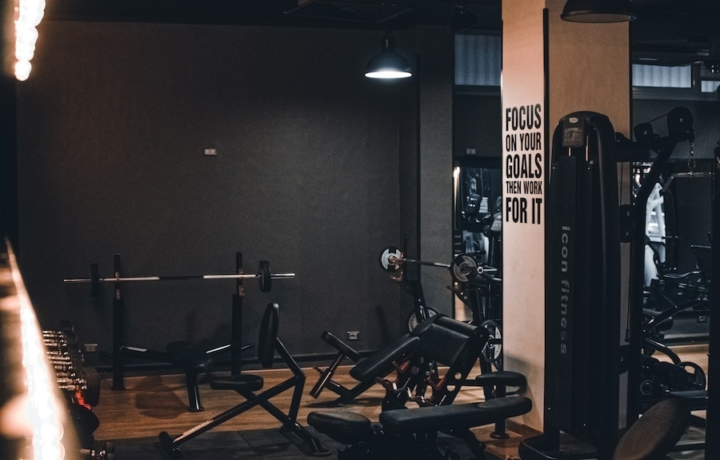Exercise
Bent Over Row With Towel

Bent Over Row With Towel
How to Perform
- Stand with your feet shoulder-width apart and place a rolled-up towel under your feet, gripping both ends firmly.
- Hinge at your hips, pushing your buttocks back while maintaining a flat back until your torso is nearly parallel to the floor.
- Allow your arms to hang straight down from your shoulders, keeping a slight bend in your knees for stability.
- Brace your core and squeeze your shoulder blades together to create tension in the towel.
- Pull the towel toward your lower abdomen by driving your elbows up and back, keeping your elbows close to your body.
- Exhale during the pulling motion and maintain a neutral spine throughout the movement.
- Pause briefly at the top of the movement, focusing on the contraction in your back muscles.
- Inhale as you slowly lower the towel back to the starting position with controlled movement, maintaining tension throughout.
Important information
- Ensure your back remains flat throughout the exercise; avoid rounding or excessively arching your spine.
- Keep your neck in a neutral position by gazing at a spot on the floor a few feet in front of you.
- Adjust the tension in the towel by widening or narrowing your grip to match your strength level.
- If you feel any strain in your lower back, decrease the forward angle of your torso or take a break to reset your form.

Bent Over Row With Towel
Exercise Details
Primary Muscles
Muscle Groups
Mechanic
Risk Areas
Built for progress
Take the guesswork out of training
Create personalized AI-powered workout plans that evolve with you. Train smarter, track every rep and keep moving forward, one workout at a time.






The Bent Over Row With Towel offers a unique twist on the traditional bent-over row exercise, delivering exceptional benefits for your upper back development while adding an element of grip challenge. This intermediate-level movement primarily targets the latissimus dorsi, trapezius, and biceps, making it a powerful compound exercise for building a stronger, more defined back.
What sets this variation apart is the use of a towel, which creates an unstable grip that forces your forearms, biceps, and grip strength to work overtime while you're targeting those powerful back muscles. The added instability means your stabilizing muscles must engage more intensely throughout the movement, amplifying the overall effectiveness for bodybuilding purposes.
When incorporated into HIIT workouts, the Bent Over Row With Towel can elevate your heart rate while simultaneously building strength in your posterior chain. This dual benefit makes it particularly valuable for those looking to maximize workout efficiency. The exercise serves as an excellent addition to upper body strength routines, especially for athletes or fitness enthusiasts seeking to improve functional pulling power.
The beauty of this exercise lies in its adaptability—whether you're using it as part of a bodybuilding regimen to sculpt a well-defined back or integrating it into high-intensity circuits for conditioning, the Bent Over Row With Towel delivers impressive results. The increased grip demand translates to greater overall back activation, potentially leading to enhanced muscle recruitment throughout the lats and traps.
Regular implementation of this exercise into your training routine can contribute significantly to postural improvements, back strength development, and upper body aesthetics. The combination of strength demands and muscle activation patterns makes it particularly effective for intermediate trainees looking to break through plateaus in their back development or grip strength. As with any resistance exercise, consistent progressive overload remains key to seeing continued strength and muscle adaptations over time.
FAQ - Bent Over Row With Towel
This exercise primarily targets your latissimus dorsi, rhomboids, and trapezius muscles, while also engaging your biceps and forearms due to the unstable towel grip. Your core muscles also work as stabilizers throughout the movement.
The towel creates an unstable grip that forces your forearms and biceps to work harder while increasing activation in your back muscles. This instability recruits more stabilizing muscles and intensifies the mind-muscle connection with your lats and upper back.
Beginners can start with lighter weight and higher reps (12-15) focusing on proper form. Intermediate lifters can progress to moderate weight in the 8-12 rep range. Advanced lifters can incorporate techniques like drop sets, slower negatives, or single-arm variations to increase intensity without compromising form.
The most common mistakes include rounding your lower back, rotating your hips instead of keeping them square, rushing through the movement, and not hinging properly at the hips. Focus on maintaining a neutral spine, moving with control, and keeping your standing knee slightly soft rather than locked.
Include this exercise 1-2 times weekly as part of your back or pull training days. Allow 48-72 hours of recovery between sessions that target the same muscle groups for optimal development and to prevent overtraining.







